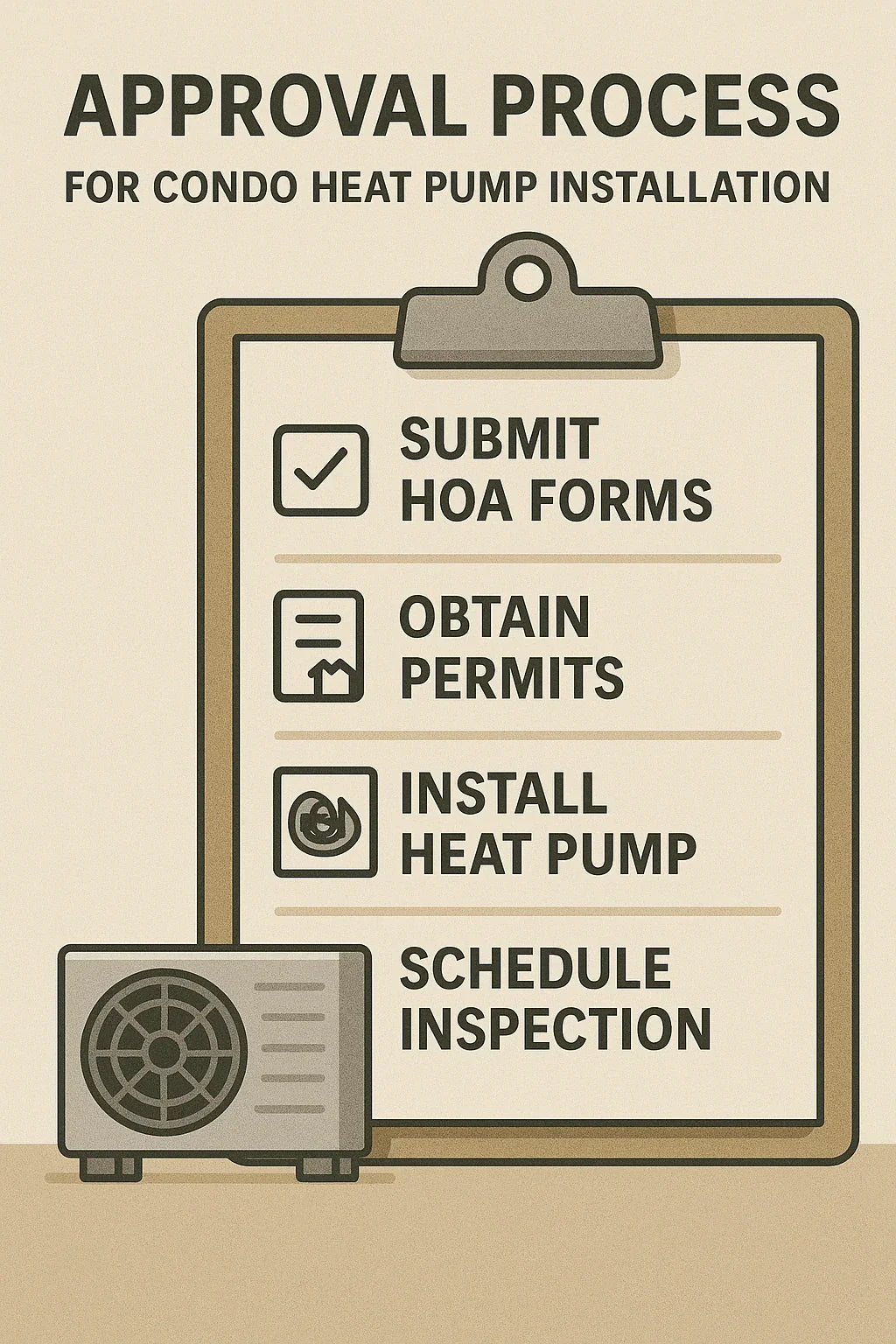Heat pumps aren’t just for single-family homes anymore. With rising energy costs and the push for more efficient heating and cooling, many apartment and condo owners are asking the same question: Can I install a DIY heat pump in my unit?
The short answer: sometimes, but it’s complicated. Multi-unit living comes with unique space limitations, legal restrictions, and technical hurdles. Before you start ordering equipment, you’ll need to understand your building’s rules, plan for space and noise, and ensure your installation will meet all code requirements.
In this guide, I’ll break down the must-know considerations so you can avoid costly mistakes—and keep your neighbors and building management happy.
📘 Thinking of a DIY install for your home? Start with the Complete Guide to DIY Heat Pump Installation for an overview of tools, permits, and step-by-step process.
Why DIY Heat Pump Installs Are Different in Apartments and Condos
Installing a heat pump in a detached home gives you plenty of flexibility—wall space, yard space for the outdoor unit, and no shared infrastructure to worry about. In a multi-unit building, you’re working with:
-
Limited outdoor space – often just a small balcony or no private exterior wall at all.
-
Shared walls and ceilings – making it harder to run refrigerant line sets without drilling through structural or fire-rated walls.
-
Noise restrictions – both from the building code and from your neighbors’ expectations.
-
Shared electrical systems – which can limit how much extra load you can add without an electrical upgrade.
The U.S. Department of Energy explains that proper installation is critical to a heat pump’s performance—and in multi-unit housing, that means working within more constraints than the average single-family setup .
The Legal and Approval Process
Building and HOA Rules
Before you even shop for a unit, you’ll want to check with your homeowners association (HOA), condo board, or building management. Many HOAs have:
-
Approved equipment lists (specific brands/models)
-
Rules on where outdoor units can be placed
-
Restrictions on visible piping, brackets, or covers
-
Noise level maximums (often around 50–60 dB)
Some buildings require that all HVAC work—DIY or professional—be done by an approved contractor. If you skip this step, you risk being forced to remove your new system at your own expense.
📘 See the ICC Mechanical Code Overview for how building codes interact with HOA rules.
Permits and Inspections
Just because it’s a “DIY” project doesn’t mean you can skip permits. In fact, permits are even more critical in multi-unit buildings.
Typical requirements may include:
-
Mechanical permit – for the equipment itself.
-
Electrical permit – if you’re adding or upgrading circuits.
-
Structural permit – if you’re mounting the outdoor unit to a wall or rooftop.
Some jurisdictions require licensed technicians to handle any refrigerant connection, even if you’re doing the rest of the work yourself.
Physical Installation Challenges in Multi-Unit Buildings
Finding Space for the Outdoor Unit
Outdoor space is often the biggest challenge in a multi-unit setup. Options include:
-
Balcony placement – Make sure the unit doesn’t block exits or airflow.
-
Wall-mounted brackets – Check the building’s structural capacity and wind-load ratings.
-
Rooftop installations – May require shared space approval and a crane lift.
The team at TK Air Power warns that poor clearance can cause airflow issues, reducing efficiency and shortening compressor life.
Routing Line Sets and Drainage
Even if you find a home for the outdoor unit, you’ll still need to get refrigerant lines and condensate drains from the indoor unit to the outside. In multi-unit buildings, this can mean:
-
Drilling through fire-rated walls (requires special sleeves and approvals)
-
Avoiding plumbing and electrical runs in shared walls
-
Routing condensate drains with a proper slope to avoid backups
HVAC School notes that improper condensate drain installation can lead to leaks that damage both your unit and your neighbor’s ceiling below.
Noise, Vibration, and Neighbor Considerations
You might not notice the low hum of a heat pump when it’s running—but your neighbors could.
Typical noise-control measures include:
-
Vibration pads under the outdoor unit
-
Noise shields or deflectors to direct sound away from nearby windows
-
Keeping outdoor units away from shared bedroom walls
Soundproof Cow suggests combining vibration isolation with strategic placement to minimize sound transfer indoors.
Cost, Time, and Practicality vs. Hiring a Pro
While a DIY heat pump can save thousands in labor costs, the complexity of multi-unit installs often tips the scales in favor of hiring a pro—especially one familiar with your building type.
Pros bring:
-
Knowledge of HOA and permit processes
-
Tools for tight-space installs
-
Liability coverage if something goes wrong
If you’re determined to DIY, make sure you factor in extra time for approval processes and potential modifications to your plan.
Final Thoughts from Alex
Installing a DIY heat pump in an apartment or condo is possible, but it’s not the same as popping one into a suburban home. Between approvals, space limits, and noise concerns, you’ll need a solid plan before you even buy the unit.
If you’re in doubt, get an installer to do a feasibility check—you can still handle some of the project yourself to save money. But when it comes to compliance and avoiding costly do-overs, a little expert help can go a long way.
Next up: How to Connect a DIY Mini-Split to a Smart Thermostat or App—because once it’s in, you’ll want the convenience and energy savings of full smart control.
Alex Lane
Your Home Comfort Advocate







